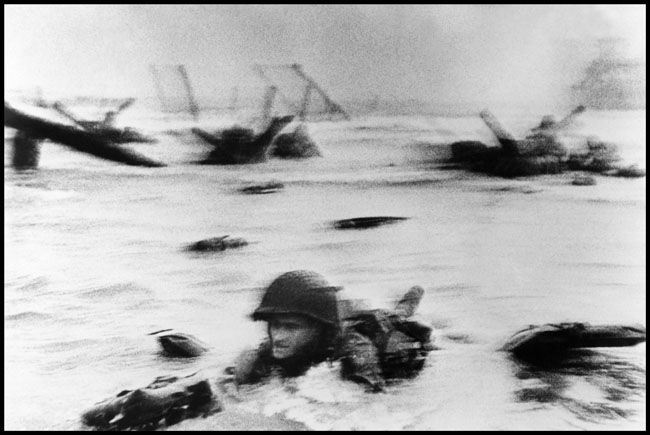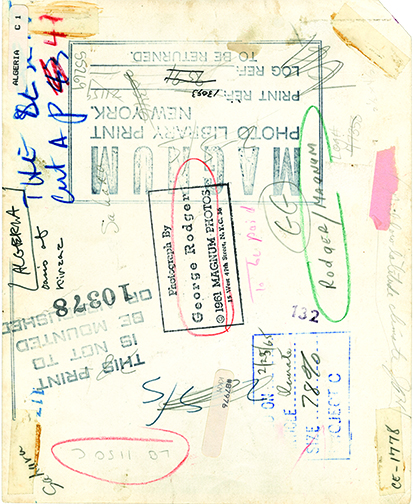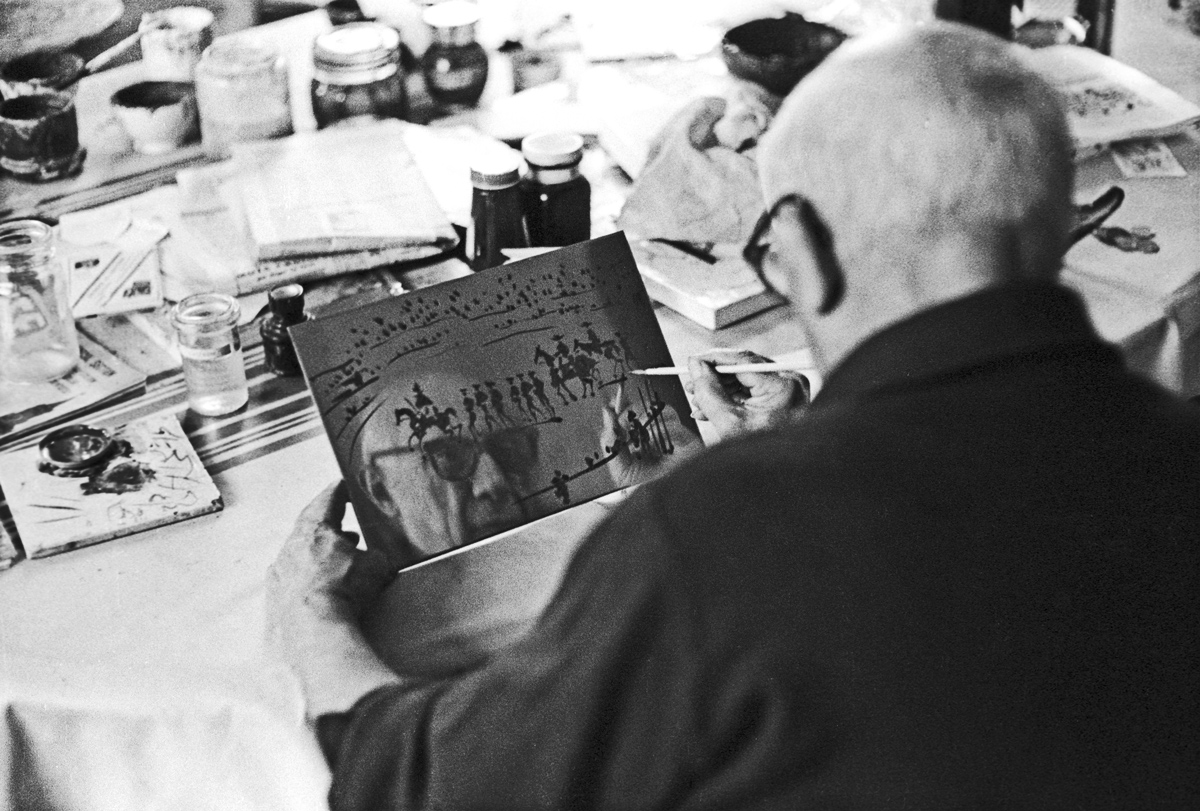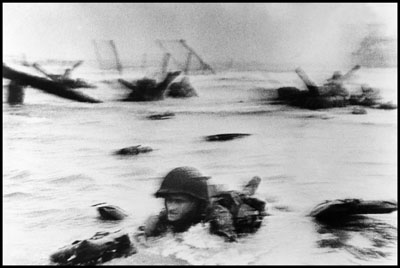In the third installment of our tribute to David Douglas Duncan in the month of his 100th birthday, Mary Alice Harper, Head of Visual Materials Cataloging, writes about Duncan’s close relationship with Pablo Picasso. [Read more…] about David Douglas Duncan at 100: A month of tributes to David Douglas Duncan in honor of his 100th birthday—Part 3
Robert Capa
In the Galleries: Robert Capa

Robert Capa (1913–1954), proclaimed “The Greatest War Photographer in the World” by the Picture Post in 1938, famously created some of the only surviving photographs of the Allied Invasion of Normandy in 1944. When his rolls of film arrived for development at the Life magazine office in London, a darkroom assistant was told to rush the processing to get the photographs to New York for publication in the next issue. The assistant placed the newly developed film in a drying cabinet on high heat, melting the emulsion on three of the four rolls. Luckily, ten images from the fourth roll were not entirely destroyed and appeared only “slightly out of focus,” the title Capa would cleverly give to his memoir in 1947. The blurred photographs became known for their sense of drama and immediacy, as Life’s story captions falsely attributed the blur to Capa’s trembling hands.
In the Ransom Center’s exhibition Radical Transformation: Magnum Photos into the Digital Age, on view through January 5, this photograph is presented in a way that shows both the front and back of the print. Visitors are able to see the stamps, inscriptions, reference numbers, and notes that trace the trajectory of this individual press print, one of nearly 200,000 recently donated to the Ransom Center. Also on view are four additional photographs from the larger group that constituted Capa’s D-Day picture story, facsimile versions of his handwritten captions submitted to Life magazine, and copies of the June 19, 1944 issue of Life showing how the story was published.
Three years later, Capa and his close friends Henri Cartier-Bresson, George Rodger, and David “Chim” Seymour founded the Magnum Photos agency in the penthouse restaurant of the Museum of Modern Art in New York. (Photographer William Vandivert also joined the group but left after about a year.) These were photographers who had experienced a catastrophic war and were united by their belief in a shared obligation to be the historians of their own causes. Magnum Photos continues to be fully owned and supported by its members, numbering over 100 since its founding in 1947, with offices in New York, Paris, London, and Tokyo.
Photography department intern Josephine Minhinnett contributed to this post.
Magnum Photos collection donated to the Ransom Center

The Magnum Photos collection, which contains nearly 200,000 press prints of images taken by world-renowned Magnum photographers, has been donated to the Ransom Center. The gift was made by Michael and Susan Dell, Glenn and Amanda Fuhrman, and John and Amy Phelan.
Mr. Dell is Founder, Chairman and CEO of Dell Inc. Messrs. Fuhrman and Phelan are Co-Managing Partners and Co-Founders of MSD Capital, L.P., the private investment firm for Mr. Dell and his family.
In 2009, the Dells, Fuhrmans and Phelans purchased the collection from Magnum Photos. Since late 2009, the collection has resided at the Ransom Center, where it is being preserved and made accessible for research.
The collection, more than 1,300 boxes of photographic materials, has been integrated into the university’s curriculum, accessed by students and scholars, and promoted through a variety of lectures, seminars, and fellowships.
“The establishment of the Magnum Photos collection at the Ransom Center gives the work of these photographers new life,” said Stephen Enniss, director of the Ransom Center. “This photographic collection will be an invaluable resource, for decades to come, for students and scholars and all who wish to understand the cultural and historical moment through which we have recently come.”
The Ransom Center’s current exhibition, Radical Transformation: Magnum Photos into the Digital Age, draws from the vast collection of prints, exploring the evolution of the photo agency from the post-war golden era of the picture magazine to the digital age. Organized by Ransom Center photography curators Jessica S. McDonald and Roy Flukinger, the exhibition includes more than 300 photographs, plus a selection of contact sheets, documents, tear sheets, magazines, books, films, videos, and other multimedia. It is on view through January 5.
Complementing the exhibition is the Ransom Center’s symposium “Magnum Photos into the Digital Age.” The October 25–27 symposium brings together photographers, curators, and historians to discuss the ways in which Magnum Photos has continually reinvented itself from the moment of its founding. Symposium participants include Magnum photographers Christopher Anderson, Bruno Barbey, Michael Christopher Brown, Eli Reed, Jim Goldberg, Josef Koudelka, Susan Meiselas, Mark Power, Moises Saman, Alessandra Sanguinetti, Alec Soth, and Chris Steele-Perkins.
Reading Magnum: A Visual Archive of the Modern World is the first publication to examine the Magnum Photos collection itself. Published by University of Texas Press in September and edited by Steven Hoelscher, academic curator of photography at the Ransom Center, the book explores prominent themes in the collection—war and conflict, portraiture, geography, cultural life, social relations, and globalization—and includes evocative portfolios of images.

